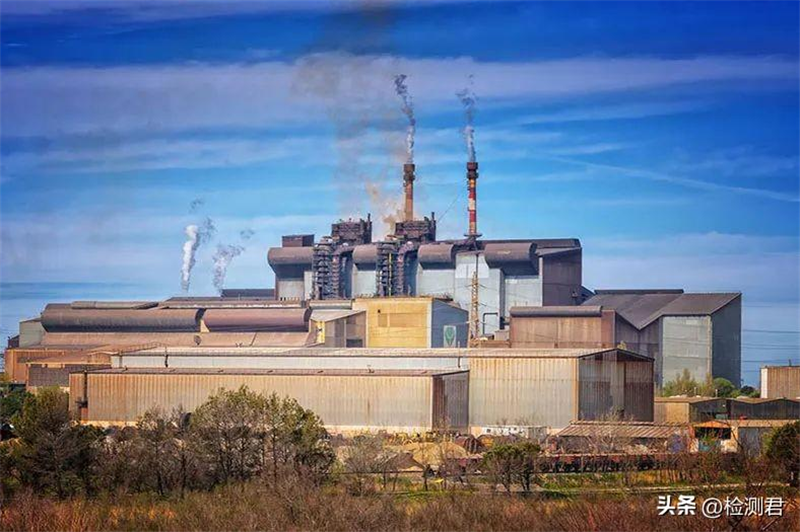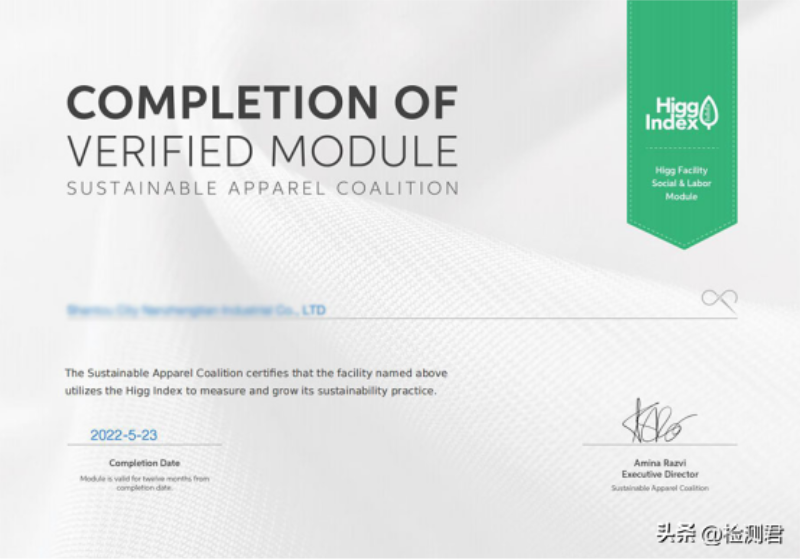As the world’s largest supermarket chain, Walmart has previously launched a sustainable development plan for textile mills, requiring that starting from 2022, suppliers of clothing and soft home textile products that cooperate with it should pass Higg FEM verification. So, what is the relationship between Higg FEM verification and Higg factory audit? What are the main content, verification process and evaluation criteria of Higg FEM?
1. The relationship between Higg FEM verification and Higg factory audit
Higg FEM verification is a type of Higg factory audit, which is achieved through the Higg Index tool. The Higg Index is a set of online self-assessment tools designed to assess the environmental and social impacts of clothing and footwear products. The industry environmental protection assessment standard is formulated after discussion and research by various members. SAC is formed by some well-known apparel brand companies (such as Nike, Adidas, GAP, Marks & Spencer), as well as the US Environmental Protection Agency and other NGOs, it reduces the need for repetitive self-assessments and helps identify ways to improve performance Chance.
Higg factory audit is also called Higg Index factory audit, including two modules: Higg FEM (Higg Index Facility Environmental Module) and Higg FSLM (Higg Index Facility Social & Labor Module), Higg FSLM is based on the SLCP evaluation framework. Also called SLCP factory audit.
2. Main content of Higg FEM verification
Higg FEM environmental verification mainly examines the following factors: water consumption in the production process and its impact on water quality, energy consumption and carbon dioxide emissions, the use of chemical agents and whether toxic substances are produced. The Higg FEM environment verification module consists of 7 parts:
1. Environmental management system
2. Energy use/greenhouse gas emissions
3. Use water
4. Wastewater/sewage
5. Exhaust emissions
6. Waste management
7. Chemical Management
3. Higg FEM Verification Evaluation Criteria
Each section of the Higg FEM consists of a three-level structure (levels 1, 2, 3) representing progressively increasing levels of environmental practice, unless both level 1 and level 2 questions are answered, generally (but not in all cases) ), the answer at level 3 will not be “yes”.
Level 1 = Recognize, understand Higg Index requirements and comply with legal norms
Level 2 = Planning and Management, demonstrating leadership on the plant side
Level 3 = Achieving Sustainable Development Measures / Demonstrating Performance and Progress
Some factories are inexperienced. During the self-assessment, the first level is “No” and the third level is “Yes”, resulting in a low final verification score. It is recommended that suppliers who need to apply for FEM verification consult a professional third party in advance .
Higg FEM is not a compliance audit, but encourages “continuous improvement”. The result of the verification is not reflected as “pass” or “fail”, but only a score is reported, and the specific acceptable score is determined by the customer.
4. Higg FEM verification application process
1. Visit the HIGG official website and fill in the factory information; 2. Purchase the FEM environmental self-assessment module and fill it in. The assessment has a lot of content. It is recommended to consult a professional third party before filling in; FEM self-assessment;
If the customer does not require on-site verification, it is basically over; if factory on-site verification is required, the following steps need to be continued:
4. Visit the HIGG official website and purchase the vFEM verification module; 5. Contact the appropriate third-party testing agency, inquire, make payment, and agree on the date of the factory inspection; 6. Determine the verification agency on the Higg system; 7. Arrange on-site verification and upload the verification Report to HIGG’s official website; 8. Customers check the actual situation of the factory through the system report.
5. Higg FEM verification related fees
Higg FEM environment verification requires the purchase of two modules:
Module 1: FEM self-assessment module As long as the customer requests, regardless of whether on-site verification is required, the factory must purchase the FEM self-assessment module.
Module 2: vFEM verification module If the customer requires the factory to accept the Higg FEM environmental field verification, the factory must purchase the vFEM verification module.
6. Why do you need a third party to do on-site verification?
Compared with Higg FEM self-assessment, Higg FEM on-site verification can provide additional benefits for factories. The data verified by third-party testing agencies is more accurate and reliable, eliminating human bias, and Higg FEM verification results can be shared with relevant global brands. Which will help improve the supply chain system and customer trust, and bring more global orders to the factory
Post time: Aug-17-2022







